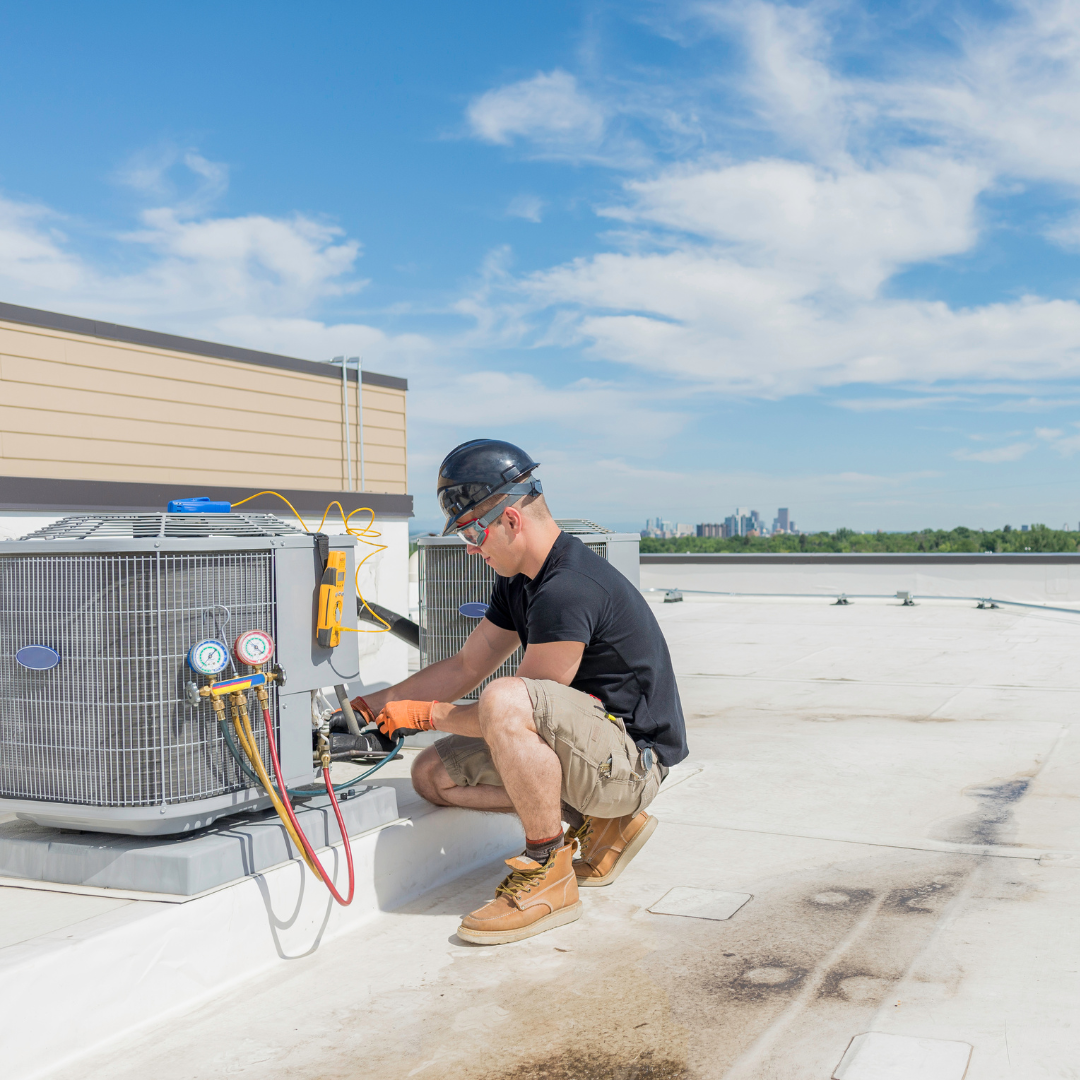
If you’re considering buying or replacing your heating and cooling system, then you might want to consider the benefits of a rooftop HVAC system. Of course, a normal HVAC Installation within a home may be the only option for some homeowners, but a rooftop one could be an area to look into if available. These units utilize heat produced within the home to heat and cool the interior spaces. The air circulated indoors is also cooler than outdoor air since it hasn’t been exposed to the sun’s rays. This means it’s easier on your HVAC system since it doesn’t have to work as hard. And, you’ll spend less money on energy since you’ll have a heating and cooling system that’s more energy-efficient, meaning it uses less energy.
You may have noticed that cool rooftop HVAC systems are now popping up in more and more buildings. These units provide cooling and heating for your property’s rooftop without taking up any space on the ground. This makes them ideal for office buildings, shopping centers, malls, and hospitals, but not every property fits this profile.
Ease of maintenance – This makes rooftop HVAC systems easier to maintain, and because it is less maintenance, they are much more energy-efficient. Rooftop HVAC systems are also cost-effective. They are less expensive than traditional HVAC systems because the space they have to cover is usually smaller. This saves on energy costs since there is less space to cool, heat, and ventilate.
Easy to install – One of the advantages of rooftop HVAC systems is that they’re designed to install directly on the roof without cutting into the roof. When installed this way, the rooftop HVAC system saves space and reduces installation time and costs. For the most part, maintenance on rooftop HVAC systems seems as easy and stress-free as any other system that can be installed on the ground. For proper rooftop HVAC installation, you can contact a premier HVAC contractor in Dallas, Texas. (Or wherever you live).
Optimized space – Rooftop HVAC systems can exist in even the smallest of spaces, making them perfect for condos and apartment dwellers. Roof-mounted HVAC systems require less space for installation, and that space is freed up for landscaping or new building additions. Rooftop HVAC systems also tend to be more efficient.
Efficient use of energy – Rooftop HVAC systems are convenient, energy-efficient, and eco-friendly. They can help cut your energy bills, and by saving energy, they can help cut greenhouse gas emissions. Moreover, if the HVAC is on the rooftop, you may also get enough space to install a heating oil tank, which can help you reduce the chances of energy waste. And with the additional resources like a tank monitor, perhaps provided by a company like Romeo’s Fuel, you can also minimize your extra expenses.
Security – An HVAC system placed on top of your roof means added deterrence against vandalism and theft. Since its location is elevated, the mechanism is further from dirt, dust, litter, as well as other debris causing accidental damage, and reducing air con maintenance needs.
Adaptability – Heating, ventilation, and air conditioning (HVAC) systems can be complicated, but rooftop HVACs are different. That’s because rooftop HVAC systems are adapted to fit properties that might otherwise not be suited to traditional HVAC systems. Rooftop HVAC systems are also designed to adapt to their surroundings.
Air quality – When you think back on times that you’ve been in an area with bad air quality, you probably remember what it was like to breathe. You may recall coughing, sneezing, and feeling ill. Chances are if you used an at home mold test kit, it would have tested very high for mold particles. Investing in a rooftop HVAC unit has the advantages of improving air flow and quality, preventing the buildup of pollutants or mold.
The rooftop unit (RTU) is part of an HVAC system, which is a system designed to regulate the temperature and humidity of an area or building. Some HVAC systems include HVAC ductwork, which distributes the heat/cold/humidity from the rooftop unit (RTU) throughout a home or other building. A rooftop unit (RTU) is installed on top of a building and is generally installed in more sunny places, such as in temperate climates.
